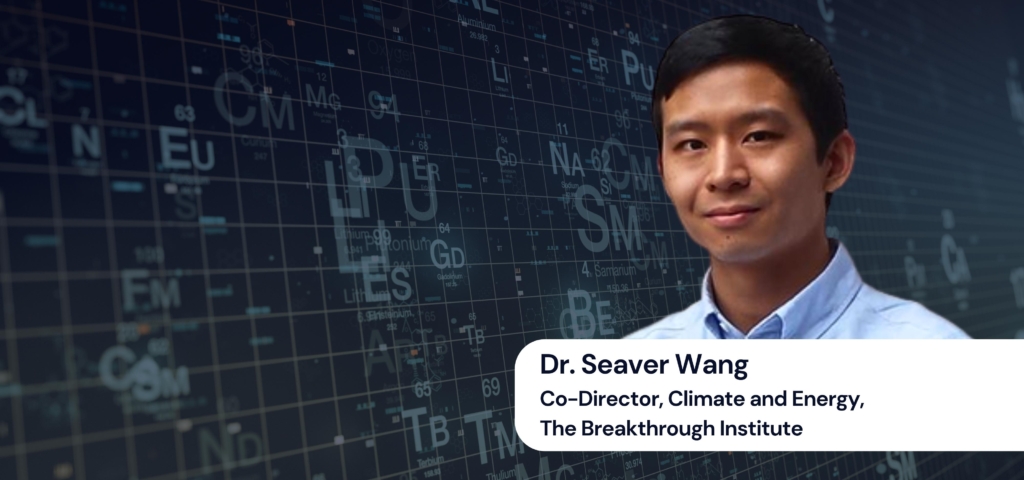To understand the role of critical minerals in energy transition, including whether the world has enough of these minerals, we spoke to Dr. Seaver Wang, Co-Director of the Climate and Energy team at the United States-based Breakthrough Institute. Dr. Wang writes on critical minerals and recently published a paper titled “Future demand for electricity generation materials under different climate mitigation scenarios,” which unpacks the feasibility of using critical minerals at scale to meet climate goals.

The Elusive 1.5 Degrees Celsius Target
Seaver Wang addresses the question of whether the world can maintain global warming below 1.5 degrees Celsius. He candidly admits his skepticism, citing the steep emissions reduction curve required to meet this target. He highlights the challenges of achieving such an ambitious goal, especially when major emitters like China are not expected to peak their emissions until around 2030. Seaver acknowledges that the 1.5 degrees Celsius target may be slipping out of reach, but he emphasizes the importance of every tenth of a degree in the fight against climate change.
Reimagining Climate Diplomacy
The conversation shifts to the topic of climate diplomacy, and Seaver Wang shares his perspective on the complexities of international negotiations. While acknowledging the limitations of the current framework, he points out that it’s challenging to navigate the self-interests of nations in the international arena. However, he also highlights the growing influence of global civil society and interconnectedness, which can exert moral pressure on countries to take action.
Understanding Critical Minerals
The heart of the conversation revolves around critical minerals, which are essential for clean energy technologies. Seaver Wang explains that the definition of critical minerals varies from country to country, often based on their strategic importance for specific industries. These minerals are characterized by their economic significance and, in some cases, limited global supply. Examples include lithium, cobalt, rare earth metals, and copper, all vital components of clean energy solutions.
Geopolitical Implications of Critical Minerals
The discussion then delves into the geopolitical implications of critical minerals. Seaver Wang points out that China plays a dominant role in the supply chain of several critical minerals due to early and substantial investments in their extraction and processing. However, he emphasizes that the concentration of supply chains should not be mistaken for a potential cause of war, as critical minerals are not as vital as fossil fuels. Instead, they are crucial for a country’s economic interests and the pace of its clean energy transition.
Expanding Supply Chains
Seaver Wang explains that the dominance of certain countries in critical mineral supply chains is not due to the scarcity of these minerals but rather their early investments in the industry. He suggests that other nations can expand their supply chains by investing in extraction, refining, and processing. This would mitigate the geopolitical risks associated with a single dominant supplier.
Exploring Alternative Sources
In addition to land-based mining, Seaver Wang discusses alternative sources of critical minerals. He mentions the potential of deep-sea mining, which, if managed responsibly, could reduce the environmental impact compared to land-based mining. He acknowledges the controversy surrounding deep-sea mining within the scientific community but emphasizes the need for thorough testing and oversight.
Seaver Wang also highlights unconventional sources of minerals, such as geothermal brines and coal ashes, which could provide cleaner and more sustainable alternatives to traditional mining methods.
Conclusion
The conversation with Seaver Wang provides valuable insights into the intricate world of critical minerals and their role in the clean energy transition. It underscores the importance of diversifying supply chains, investing in responsible mining practices, and exploring alternative sources of these essential resources. While challenges remain, innovative solutions and international cooperation can help secure the critical minerals needed to power a sustainable future.
(Access the complete interview by tuning in to the TIEH podcast available on our website and other major podcast platforms.)


